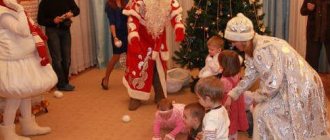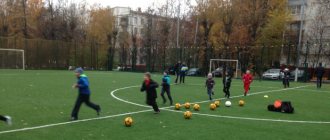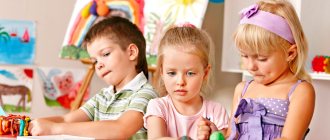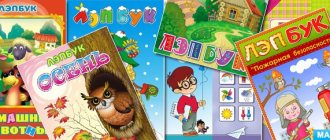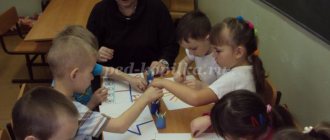A children's birthday is a wonderful occasion to feel like a wizard and give the birthday boy and his guests a real trip into a fairy tale. The easiest way to arrange a holiday for a child is to hire professional animators, but the child will much more enjoy and remember the time spent with his parents than with a stranger, even if he is an expert in his field. In addition, animators and guest presenters do not always know the birthday person and the team well and therefore cannot take into account individual characteristics when drawing up game scripts for children.
All competitions and games must be prepared taking into account the age of the guests and the birthday person. You can separate games for boys and girls, but the ideal option is for the competition to suit all participants, regardless of their gender.
Kids will enjoy simple and active games more. Preschoolers are more assiduous, so you can offer them several games for attentiveness and ingenuity. Primary school children will enjoy quizzes and board games. In any case, you need to alternate active games with calm entertainment.
Stages of preparing a children's party
Organizing a children's party is actually not that difficult. To do this you need to perform several steps:
- Decorate the room. Balloons, flags, banners with inscriptions, funny photographs of the birthday boy or images with his favorite fairy-tale/cartoon characters can be used as decoration.
- Set the table. There is no need to prepare roasts, mayonnaise salads and numerous snacks. Children will appreciate the sweet table and fruit selections. Of course, the centerpiece of the table is the birthday cake (necessarily with candles, because blowing them out is a fun tradition that every child looks forward to on their birthday). It is recommended to use festive dishes with cheerful designs. Firstly, this will make the table look more elegant. Secondly, children will not be afraid of breaking a plate or glass. Thirdly, this will save parents from having to wash mountains of dirty dishes after the holiday is over.
- Prepare gifts. You can not just give gifts to the birthday boy, but arrange a real quest to find gifts and even involve all the guests in it. If all invited children will participate in the quest, it is worth preparing a small gift for each of them.
- Choose games for children for their birthday.
You need to prepare especially carefully for the last point, because children will quickly get bored of sitting at the table, they will quickly want to move around and have fun.
Don't forget about the prizes for the competition winners. These can be various little things (soap bubbles, funny keychains, stickers, children's stationery, etc.) or sweets.
Birthday games at home
If you wish and carefully prepare your home, you can organize a party that will be no worse than an event in the game room. Moreover, the birthday boy will feel more comfortable in his own home; a familiar environment is the best remedy for shyness.
To prepare fun home games for a child’s birthday, parents need to have only a little enthusiasm, a minimum of time and organizational skills, but a great desire to please their child on his long-awaited holiday.
"Fanta"
- Number of players: unlimited.
- Props: hat, vase, box or other container, notes with tasks, forfeits (personal items of all participants).
- Children's age: 5+
A game familiar to absolutely everyone. One leader is selected, who turns his back to all players. The second presenter chooses a forfeit and asks: “What should this forfeit do?” The first presenter takes a note from the hat with the task and reads it out loud. If the first presenter is an adult with imagination, then you can do without notes and come up with tasks on the go. The tasks should be simple (crow a rooster, jump on one leg, etc.).
Another option for this entertainment could be the chamomile game. The essence is approximately the same, but the tasks are written on the petals of a large daisy. Each participant tears off a petal at random and completes the task assigned to him.
"Painted Figure"
- Number of participants: not limited, but must be even so that participants can divide into pairs.
- Props: none.
- Children's age: 5+
Participants are divided into pairs, each pair speaking in turn. One player from the pair “draws” some kind of figure/animal/plant on the other’s back with his finger. The second participant with the “drawn” figure must depict it. The pair that guessed right shows next. The pair whose pieces are guessed the most wins.
"Self-Portrait"
- Number of participants: unlimited.
- Props: Whatman paper with slots for hands, paints, brushes, water.
- Children's age: 4+
The participant inserts his hands into the slits of the Whatman paper. Next, he needs to blindly draw a self-portrait. The winner is the one whose drawing is as close as possible to the original. This is a very funny competition that will greatly amuse the participants watching the artist.
Games at the table
When the pizza is eaten and the candles on the cake are blown out, you can arrange table games for the children at the birthday party. The peculiarity of these entertainments is that they are held right at the table, without the need to get up and actively move. As a rule, table games include quizzes, riddles, tasks for ingenuity, memory and thinking.
"Remember your neighbor"
- Number of participants: unlimited.
- Props: none.
- Children's age: 7+
A game that perfectly develops memory. Children are asked to look at each other for a few minutes. Then they are blindfolded one by one and asked questions: “What color is the neighbor’s hair on the left?”, “How many buttons does the neighbor on the right have on his jacket?”, “The color of the eyes of the person sitting opposite?” and so on.
"Magic letter"
- Number of participants: unlimited.
- Props: none.
- Children's age: 6+
The presenter offers a letter. All guests must name objects starting with this letter that are in the room. The one who says the last word wins.
- DIY board games for children
"Nonsense"
- Number of participants: unlimited.
- Props: A4 sheet of paper, several ballpoint pens.
- Children's age: 8+
The first participant writes a phrase on a piece of paper that will become the beginning of a common story. Then the player wraps the sheet so that what is written is not visible. He moves the last word from his phrase to the beginning of the next line and passes the sheet to the next participant, who must continue the story.
Example: the first player writes: “One day Vaska came to school.” He wraps the piece of paper and writes again the last word: “school,” from which the second participant starts. He continues: “The school was attacked by aliens yesterday.” The phrase is wrapped, the last word is moved to a blank line, etc.
Music games
What would a holiday be without music! The celebration may end with an ordinary disco with popular children's hits, but during the celebration, musical accompaniment will be needed for entertaining birthday games.
Parents need to prepare a playlist and playback device in advance. It is also worth making sure that all dancers have enough space to demonstrate their choreographic talents.
"Slurred Singing"
- Number of participants: unlimited.
- Props: none.
- Children's age: 6+
A song is chosen that all participants know well. At the leader’s command, the children begin to sing loudly in chorus. When the presenter claps his hands, the participants continue to sing, but do it silently, after the next clap - again loudly. The one of the participants who gets lost and does not get in time with the others is eliminated. The game continues until the song is finished or until one player remains.
"Dancing with our faces"
- Number of participants: unlimited.
- Props: none.
- Children's age: 6+
The presenter selects several fragments of funny songs. Participants are invited to perform an impromptu dance to them, but with one condition - you can “dance” only with facial expressions. The winner is the one who managed to portray the funniest pantomime.
"Dancing with tasks"
- Number of participants: unlimited.
- Props: none.
- Children's age: 6+
All participants dance to the music, just like at a regular disco. The leader periodically announces some tasks (dance on one leg, take the neighbor on the right by the nose, dance in threes, move like a hare/snake/monkey, do a round dance, etc.).
"Musical Freeze"
- Number of participants: unlimited.
- Props: none.
- Children's age: 5+
Participants dance as they please. When the music stops, everyone freezes in the pose of a fairy tale hero, an animal, a cartoon character. The presenter must guess who the players are portraying. All guessed figures are eliminated, after which the game continues.
What to do with a child while mom is cooking? Kitchen games for children from two years old
Get creative in the kitchen! After all, the most ordinary things can captivate a child longer than fashionable educational toys!
Read more
- Blot . Spray paint on paper. Fold the paper with the blot inward, then unfold it again. What does the resulting print look like? Complete the picture.
— Properties of a magnet . Place a magnet under the paper and a coin on the paper. Use a magnet to move the coin along the paper. At the same time, we’ll tell you about its properties.
— Running with an “egg” . We place a ping pong ball or a Kinder container on a teaspoon and run around the entire apartment, trying to keep the ball on the spoon.
— Album with photographs . Kids are very interested in the question: “What happened when I wasn’t there yet?” So tell your child about this with the help of photographs taken before his birth: “Here I am in kindergarten (What, Mom, did you also go to kindergarten?), Here I am with my school friends. This is me studying at the institute. Here's my dad and I's wedding. And here we are at the sea, and you are in your mother’s tummy, still very small.” For the baby, this will be the most interesting story - the history of his family. Much more exciting than the most magical fairy tales...
- In which hand? Take some small object, candy or small toy and hide it behind your back. Ask the child which hand the toy is in. If the kid guessed right, it’s his turn to hide. This game will help reinforce the concepts of “right and left.” To do this, it is necessary for the baby not just to point to his hand, but to call it: “in the right hand”, “in the left hand”..."
Outdoor games
Children of all ages love various activities. Outdoor games for children at birthday parties, as a rule, are liked most by guests. The main thing is that all entertainment is safe.
Adults need to carefully monitor the participants: children who are naughty can accidentally injure themselves or others (push, fall, hit a bump, etc.). The room should have enough space for movement; it is also better to remove all breakable and fragile objects from there, and move furniture with sharp corners.
"Who am I?"
- Number of participants: unlimited.
- Props: blindfold.
- Children's age: 5+
A presenter is selected. He is blindfolded. The guests scatter, and the host must catch one of them and, with his eyes closed, determine who exactly he caught. If the host guesses correctly, the caught guest takes his place. The game will be more interesting if the presenter asks the person who falls into his hands to perform some task that will help establish his identity (sing a song, imitate an animal, for example, grunt, etc.).
- Outdoor games for children at home
"Water Carriers"
- Number of participants: not limited, but even so that children can split into two teams.
- Props: two toy buckets of the same volume.
- Children's age: 4+
Teams line up in two lines. The first participants are given a bucket of water. Their task is to run with the bucket to the start, then go back and pass the container to the next participant, who will repeat the race. When all participants have completed the relay, the leader will compare the amount of water in the buckets. The winner is the team that not only overtook their opponents, but also spilled as little liquid as possible.
"War of the Balloons"
- Number of participants: unlimited.
- Props: chairs and as many balloons as possible.
- Children's age: 2+
A partition is made from chairs in the room. The teams are located on opposite sides of the barricade. At the leader’s command, both teams begin to throw balloons to the enemy’s side. When the “Stop!” command sounds, the game ends and the balls are counted. The team with the fewest balls on its side wins.
Holidays and entertainment with children 2-3 years old; methodological development (junior group) on the topic
(FEBRUARY 2017)
"TEREMOK"
Target. Satisfying children's natural need for movement, improving the coordination of movements of preschoolers.
Tasks:
— Teach children to jump from objects 15 cm high.
— Strengthen the basic movements: children jumping on two legs and moving forward; crawling on all fours and crawling under an arc, rolling the ball in different directions with both hands.
— Fix primary colors: red, yellow, green, blue.
— Evoke in children an emotional response to the gaming activity and a desire to participate in it.
— To educate children in the ability to follow the basic rules of the game and navigate in space.
Integration: health, communication, socialization.
Equipment:
Gymnastic benches - 2 pcs.; balls according to the number of children; plastic cubes of 4 colors, 10 pcs. everyone; plastic hoops - 4 pcs.; gymnastic arch - 1 pc.; toys (mouse, frog, bunny, cockerel, fox, wolf, bear), small house.
Preliminary work:
Reading the fairy tale “Teremok”, looking at illustrations for the fairy tale, table theater; conducting outdoor games “Frog catches bugs”, “Fox and chickens”, “Hares and wolf”
Progress of the lesson.
The teacher meets the children at the entrance to the hall and informs them that now they will go to the land of fairy tales, to the field where an unusual house has been built - a tower (the children enter the hall in a column one at a time in the usual step). TEACHER. (Shows the children the mouse):
There is a mansion in the field, a mansion, It is not low, not high, not high,
Here, across the field, across the field, a mouse runs.
(the children walk in small steps on their toes.) She stopped at the door and knocked: “Who, who lives in the little house?” Who, who lives in a low place?
Nobody answered her
The mouse entered the little house and saw: there was a big bag, and the grains in it were all mixed up. And the mouse decided to sort through the grains and put them into bags. But first the mouse decided to do her favorite exercise:
"Mice"
One day the mice came out (walking) to see what time it was. (palm to forehead, turn to the sides) One, two, three, four (clap) The mice pulled the weights. (Moves hands from top to bottom) Suddenly there was a loud ringing (cover ears with hands) The mice ran out (run)
An outdoor game “Each grain in its own bag” is played: children crawl under the arc, take one cube at a time, crawl under the arc again, and run to carry the cube into a certain hoop (the hoops are marked with a certain color).
TEACHER. (takes the frog and continues the story):
There is a mansion in the field, a mansion, It is not low, not high, not high.
Here, across the field, an abalone pole is running... (children jump around the hall like frogs - squatting, hands on the floor - push off with their feet and jump forward, move their hands as far away from themselves as possible) TEACHER. She stopped at the door and knocked:
- Who, who lives in the little house? Who, who lives in a low place?
MOUSE: I am a little mouse. And who are you? FROG: I am a frog frog. MOUSE: What do you like to do? FROG:
I really love catching mosquitoes and beetles.
An active game “A frog catches bugs” is played: children squat in a circle, the teacher carries a string over the children’s heads to which a “bug” is tied, the children try to jump and from a sitting position try to reach the bug
TEACHER. (Takes the cockerel and continues)
There is a mansion in the field, a mansion, It is not low, not high, not high. Here is a cockerel hurrying across the field.
(the children scatter like cockerels, raising their knees high, patting their thighs with their hands.) He stopped at the door and knocked:
Who, who lives in the little house? Who, who lives in a low place?
MOUSE: I am a little mouse. FROG: I am a frog - a frog. And who are you? COCK:
I am a cockerel - a golden comb.
Let me live with you (guys, let’s show me what a cockerel is)
A speech is held with the "Cockerel" movement
Petya, Petya the cockerel - the children walk in a circle, inside the circle the “cockerel” walks in the opposite direction. A gilded comb, an oil head, a silk beard.
Gets up early in the morning
Sings loudly: “Ku-ka-re-ku”
The three of them began to live together.
The teacher takes the hare:
There is a teremok in the field, a teremok. He is not short, not tall, not tall. Here is a bunny running across the field..
(children jump on two legs moving forward.)
He stopped at the door and shouted: “Who, who lives in the little house?” Who, who lives in a low place?
MOUSE: I am a little mouse. FROG: I am a frog frog. HEEL: I am a cockerel, a golden comb. And who are you? HARE:
I'm a jumping bunny. (the game “Little White Bunny Sits” is played)
The little white bunny sits and moves his ears. Like this, like this, he moves his ears. The children move their hands, raising them to their heads. It’s cold for the bunny to sit, We need to warm up our paws. Clap, clap, clap, clap, We need to warm our paws. From the word “clap” and until the end of the phrase, the children clap their hands. It’s cold for the bunny to stand, the bunny needs to jump, hop-hop, hop-hop, hop-hop, the bunny needs to jump. From the words “hop-hop” until the end of the phrase, the children jump on both legs in place. Someone (or the bear) scared the bunny, the Bunny jumped... and galloped away. Let's live together.
The four of them began to live together. A fox appears. TEACHER:
There is a mansion in the field, a mansion, It is not low, not high, not high. Here is a fox running across the field
(children run on tiptoes after the teacher, who is holding a toy fox in his hands.)
.she stopped at the door and knocked: “Who, who lives in the little house?” Who, who lives in a low place?
BEASTS:
I am a little mouse. I am a frog frog. I am a cockerel, a golden comb. I am a jumping bunny. What can you do?
FOX:
I can take care of cockerels and hens. Outdoor game “Fox, hens and cockerels”: children stand on gymnastic benches, then jump off them and, pretending to be cockerels and hens, walk, peck grains, cackle, crow. At the teacher’s signal “Fox!” stand on the benches again. The fox is trying to catch someone.
TEACHER: There is a teremok in the field, a teremok
He is not short, not high, not tall.
Here, across the field, across the field, a wolf is running...
(the children run after the teacher with wide strides, like a wolf) he stopped at the door and knocked:
Who, who lives in the little house? Who, who lives in a low place?
BEASTS:
I am a little mouse.
I am a frog - a frog. I am a cockerel, a golden comb. I am a fox-sister. What can you do?
WOLF: I like to play hide-and-seek and chase with bunnies. FROG: Play with our bunny. Outdoor game “Hares and the Wolf” TEACHER: The top and the bunny played enough and went to the mansion to rest.
(A bear appears)
There is a mansion in the field, a mansion, It is not low, not high, not high.
Here, across the field, across the field, the bear is in a hurry, Stopping at the door and knocking: Who, who lives in the little house? Who, who lives in a low place?
BEASTS:
I am a little mouse.
I am a frog - a frog. I am a cockerel, a golden comb. I am a fox - sister
I am a gray wolf. What do you like to do?
BEAR:
I like to go to the forest and chop wood. (children perform movements - chop wood, then take balls and roll them around the hall in different directions with both hands.)
The TEACHER completes his leisure time:
-Guys, let's dance with our Mishka!
“This is how our Mishutka dances well” (Music by Elena Zheleznyak)
Well done! They danced merrily! And Mishka brought us a treat. Delicious, juicy forest apples. Let's say thank you and say goodbye to him.
Games with parents
Despite the fact that the majority of the guests are children, and the hero of the celebration is the birthday child, adults do not have to stay away from the fun. Parents can also take part in competitions. Moreover, why not compete with the children (of course, giving in to them just a little).
- Fun games and funny competitions for children at home: 22 ways not to get bored within four walls
"Photo puzzles"
- Number of participants: unlimited.
- Props: A4 photographs, cut into several pieces. It is advisable to take different photos of the birthday boy with friends.
- Children's age: 5+
Participants are divided into two teams – adults and children. Each team receives its own “puzzle”. The team that collects the picture the fastest wins. You can also use a frame from a cartoon rather than a photo. You not only need to assemble the puzzle, but also guess which cartoon the image is from.
"Papa Races"
- Number of participants: teams “father + child”.
- Props: none.
- Children's age: 3+
Competitions for dads and children. Dads get on all fours, children sit on their backs. The goal of the competition is simple - to ride your dad to the end of the room and back faster than the other participants.
"Following Animal Tracks"
- Number of participants: unlimited.
- Props: cardboard footprints of various animals.
- Children's age: 6+
Participants are divided into teams “parent + child”. The goal of the competition is to reach the finish line as quickly as possible. Parents receive two animal tracks. The child should only step on these footprints. The player puts all his weight on one leg while his parent rearranges the cardboard - a trace for the next step.
"Little Red Riding Hood's Path"
- Number of participants: unlimited.
- Props: two ropes at least 5 meters long.
- Children's age: 4+
Not only children and parents, but also grandmothers can take part in this task. Participants are divided into two teams – children and parents. In front of the children's team, the rope is placed in a straight path, in front of the parents' team - in a winding path. The goal of the game is to quickly walk along your path to your grandmother, who is waiting at the finish line. You can take a real “grandmother” from the invited guests. If there is none, then any of the participants can replace it.
Joint games with parents are not just entertainment, but also an opportunity to communicate with your child, bond more with him, and also get to know his friends better.
What developmental activities at home does a 2-year-old child need?
Psychologists call the 2-year age of a child (up to 3 years) transitional, this is a milestone in which you can still notice the features of infancy and, nevertheless, see how quickly and rapidly the baby is growing up. The first signs of a baby growing up: his activity, frequent whims, obstinacy, disobedience and disobedience. All this is far from so bad, because the child simply strives to be independent.
IMPORTANT! From the age of 2 years, you need to work with a child, because this is a prerequisite for the development of his personality. In addition, such activities will open up the world to him from a new side, interest him and open his thirst for knowledge.
What classes are needed:
- Games with a constructor. This is not only useful, but also very interesting for the child. Kids love to “tinker” with different shapes and figures of different colors, creating and destroying structures. In modern stores you can find a variety of types of construction sets: wooden, large plastic LEGO, magnetic construction sets.
- Drawing. This is one of the most important activities for kids. You can draw with pencils, brushes, felt-tip pens, regular or finger paints, or draw on sand or a magnetic tablet. Drawing will allow you to explore colors, draw different shapes, and mix paints.
- Modeling from plasticine or salt dough. It perfectly develops the motor skills of the baby’s hands, allows him to learn the structure of materials, create figures and shapes with his own hands. Such activities can only be carried out together and make sure that the child does not put plasticine in his mouth.
- Game with bags. Games for developing motor skills. You need to pour different types of cereals or pasta into several bags (millet, buckwheat, peas, horns. Such bags should be allowed to be felt by the baby or allowed to lower his hand, guessing what exactly is there).
- Game with balls. For such games you will need a large number of large and small balls that need to be rolled, thrown, rotated, tossed, felt (for this it is advisable to choose balls with different surfaces: soft, prickly, pimply, smooth).
- Game with cubes. Very similar to a game with a constructor, the cubes can have pictures or simply be different colors. They can be viewed, folded into structures or lines.
- Educational cartoons. A modern way of developing children, it is only important to choose an age-appropriate cartoon (he will not be interested in a cartoon that is too complex, and a simple one will cause boredom).
- Finger games. Games with attachments for fingers, creating figures using palms, with rhymes and songs (for example, “Magpie Crow”).
- Abacus. In modern toy stores you can buy a variety of mazes in which you can move beads, count them and study their shapes.
- Games in the water. They can be carried out in the summer on reservoirs, in the pool and in the home bathroom at any time of the year. To do this, you should have several bottles, cups or containers that allow you to pour liquid from one to another.
- Active games in the fresh air. Various games with balls, toys, in the sandbox, racing and hide and seek, games with other children.
Simple games
Simple games and competitions are suitable for younger children. They can also be held at the end of the evening, when the guys are already a little tired of active entertainment and want to relax. Simple games include:
"Mummy".
- Children's age: 4+
You need to be the fastest to wrap the participant in toilet paper, making him a real mummy.
"Musical chairs"
- Children's age: 4+
You need to place chairs in a circle, their number should be one less than the number of participants. While the music is playing, the children dance, and as soon as silence sets in, everyone must take a chair. The participant who does not have enough chair is eliminated.
Accuracy games
- Children's age: 4+
For example, throw as many lids into a pan, candies into a bucket, etc.
"Fashion show".
- Children's age: 6+
The birthday boy is given a set of accessories. These can be scarves, glasses, handkerchiefs, hairpins and elastic bands, gloves, sparkles, ribbons and much more. His task is to feel like a designer and “decorate” his guests. At first glance, this is a game for girls, but in fact, boys dress up their comrades with no less delight, showing real miracles of imagination.
"Broken phone".
- Children's age: 6+
The presenter speaks a word into the participant’s ear, which he passes along the chain to the next one. Usually the word reaches the last player in a modified and funny form.
"Ocean is shaking".
- Children's age: 5+
The presenter says: “The sea is worried once, the sea is worried twice, the sea is worried three times, ... the figure freezes.” The figure can be nautical, athletic, cartoonish - in general, anything that comes to the presenter’s mind. Next, you need to guess what figure each participant guessed.
"Bubble".
- Children's age: 5+
The task of each participant is to blow the largest soap bubble.
"Crocodile".
- Children's age: 6+
Everyone’s favorite game is “showing off”, when the presenter speaks a word into the participant’s ear, and he must show it to the other players.
To come up with simple birthday games for children at home, parents just need to remember their own childhood. Many modern children do not know old games; even the usual “Stream” or “Loaf” can become interesting fun for kids. But for older children it’s worth coming up with more complex competitions.
An excellent ending to the celebration will be a fireworks display. All guests - both children and adults - can go outside and admire the amazing fireworks launched by parents in honor of the birthday boy.
A child's birthday should be bright, fun and unforgettable. Your holiday will be exactly like this, subject to careful preparation and competent organization. At the end of the celebration, the children will have a lot of positive emotions and memories for many years to come. Parents will feel like real superheroes who were able to make the dreams of their little birthday boy come true.
MAGAZINE Preschooler.RF
Summary of entertainment for young children “The Magic Engine is Coming to Visit”Completed by: Author: Shchipanova Larisa Viktorovna. Co-author Khorosheva Marina Vitalievna.
Goal: Formation of positive emotions during the game with peers and the teacher.
Tasks:
- Develop new knowledge about the world around us.
- Introducing children to Russian folk nursery rhymes and dances, and original children's songs.
- Development of basic movements.
- Development of fine motor skills of the hands.
- Sensory development.
- Development of communication skills.
Attributes:
Children's chairs (according to the number of children).
Toys: bunny, bear.
Natural material (cones), basket.
Red and blue runners, a suitcase with bows in three colors (red, yellow, blue).
A tape recorder with a recording of “Songs of Friends” (lyrics by S. Mikhalkov).
Progress of entertainment
Children sit on pre-prepared chairs, which stand in a row, one after another (cars), the teacher (driver) sits on the first chair, holding the steering wheel in his hands.
Educator: Guys, today we are going on a trip to a magical forest. Our train is ready to start moving, I ask everyone to take their seats.
A signal is given and the recording of “Songs of Friends” . Children tap their feet while music is playing. At the end of the recording (one verse is enough), a stop signal is given.
Educator: Attention, stop! I ask everyone to leave the carriages! Well, here we are in the magical forest. Look, there's a path here. (Points to the red track). Let's walk through it and see where we get to. (The children walk one after another along the path; at the end they are greeted by a bunny sitting on a chair).
Educator: Look, guys. Looks like someone lives here. Tell me whose house this is.
Children: Bunny.
Educator: That's right, but our bunny is kind of sad, let's pet the bunny. (Children take turns petting the bunny.)
Educator: look how beautiful his fur is: soft, fluffy, white. Does your bunny like to be petted?
Children: Yes!
Educator: Let's play with the bunny
Physical education minute “Bunnies”
Girls and boys,
Imagine that you are bunnies (children make “ears” with their hands above their heads)
One two three four five,
The little bunny began to jump. (jump on two legs)
The bunny jumped all day
The bunny is not too lazy to jump.
Educator: Well done, look how the bunny liked our game. Now he won't be sad. But our train is already waiting for us, it’s time for us to go, but I suggest giving the bunny a gift. Let's give him a bow. (The teacher takes bows of three colors from the suitcase.) Look, what color is the path leading to the bunny's house?
Children: Red!
Educator: Let’s give him a red bow too. Find him.
(Children pull out a red bow, the teacher ties it around the bunny’s neck).
Goodbye, bunny! (Children say goodbye and go to their “cars” , a signal is given, the recording of “Songs of Friends” . At the end of the recording, the children leave the “cars” ).
Educator: Look, guys, there is already a different path here. What color is it?
Children: Blue.
Educator: That's right, let's see who we'll visit this time.
(Children walk along the blue path and visit the bear cub).
Educator: Look, who are we visiting?
Children: To the bear cub!
Educator: Look what is in the hands of the bear cub.
Children: Basket!
Educator: That's right, our little bear is gathering for some cones. Let's help him collect them.
(Children collect cones, which are laid out in advance by the teacher’s assistant).
Educator: Well done guys, you picked up a whole basket of cones. Our little bear smiles and offers to play with him.
“Teddy bear” is played , during which the children repeat the movements after the teacher.
A clubfooted bear is walking through the forest, (We move like bears)
Collects cones, sings songs, (Pretend that we are collecting cones)
The cone bounced off, straight into the bear’s forehead (Put a fist to the forehead)
The bear got scared and stomped his foot. (We stomp our feet)
Educator: Well done, let's give the bear a bow so that he too will be beautiful. What color will we choose?
Children: Blue.
(The teacher ties a blue bow to the bear)
Educator: What color bows do we have left?
Children: Yellow.
Educator: That's right, let's say goodbye to the bear cub, we'll definitely visit him next time.
The children say goodbye and go to their “cars” , the recording is turned on, after the loss, a signal is given to stop. Children get out of the "cars" .
Educator: Look guys, we are back in our kindergarten. Did you enjoy our trip?
Children: Yes!
Educator: I am very glad that you liked it, we will also go on our little train to the magical forest and meet new friends. But that will happen next time. Let's say goodbye to the engine and say “Thank you” .
(The children say goodbye and thank the train.)
| Next > |
